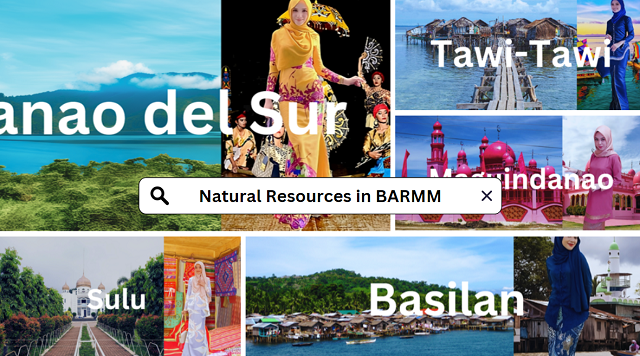Natural Resources in BARMM – The Bangsamoro Autonomous Region in Muslim Mindanao (BARMM) is blessed with a wealth of natural resources that hold immense potential for economic development. From fertile agricultural lands to rich marine environments and valuable mineral deposits, the region is well-positioned to harness these resources for the betterment of its people.
What are their contributions to the region’s economy?
The Natural Resources in BARMM
Agricultural is the Backbone of BARMM’s Economy
Agriculture is one of the primary livelihoods in BARMM, with vast tracts of fertile land supporting a variety of crops. Among the most significant agricultural resources are:
- Coconut: BARMM is a major producer of coconut, particularly in the provinces of Sulu and Tawi-Tawi[1]. Coconut products, such as copra and coconut oil, are vital exports that support local economies.
- Rubber: The region, especially Basilan, is known for its rubber plantations. Rubber is a key export product that contributes to the livelihood of many farming communities.
- Rice and Corn: Rice and corn are staple crops grown extensively in BARMM, particularly in Maguindanao[2] and Lanao del Sur[3]. These crops are essential for food security in the region.
- Abaca: This fiber, derived from banana plants, is an important agricultural product in BARMM. Abaca is used in the production of ropes, textiles, and handicrafts, providing income for many local farmers.
Tapping Marine Resources into the Wealth of the Sea
BARMM’s vast coastal areas and proximity to rich fishing grounds make marine resources a vital part of the region’s economy. Key marine resources include:
- Fishing Grounds: The region is home to abundant fishing grounds in the Sulu Sea, Moro Gulf, and Celebes Sea. Fisheries, particularly tuna, are significant contributors to the local economy, with many communities relying on fishing as their primary source of income.
- Seaweed Farming: Tawi-Tawi is a major hub for seaweed production in the Philippines. Seaweed farming is a sustainable and lucrative industry that provides jobs for thousands of people in the region.
Unlocking Mineral Resources is the Wealth Beneath the Earth
BARMM is rich in mineral resources, offering potential for mining and industrial development. Some of the key mineral resources found in the region include:
- Nickel: The islands of Tawi-Tawi are known for their nickel deposits, which are in demand for the production of stainless steel and other industrial applications.
- Copper and Gold: The mountainous areas of Lanao del Sur and other parts of BARMM contain deposits of copper and gold, which have attracted interest from mining companies.
- Limestone and Marble: The region is also rich in limestone, used for construction and cement production, as well as marble, which is mined for industrial and decorative purposes.
Forestry is the Sustainable Use of Natural Forests
BARMM’s forests provide valuable timber and non-timber resources that are essential for local industries and crafts. Important forestry resources include:
- Timber: The forests of Lanao del Sur and Maguindanao produce timber that is used for construction and furniture making, supporting both local and regional markets.
- Non-Timber Products: Rattan, bamboo, and other non-timber forest products are essential resources for the production of handicrafts, furniture, and construction materials.
Energy to Powering the Future of BARMM
The region also has significant energy resources that can be harnessed for sustainable development:
- Hydropower: The Agus Hydroelectric Complex in Lanao del Sur is one of the largest sources of renewable energy in Mindanao, providing electricity to millions of people across the island.
- Biomass: Agricultural waste and other organic materials present opportunities for biomass energy production, offering a renewable and environmentally friendly alternative to traditional energy sources.
Harnessing BARMM’s Natural Wealth for Sustainable Development
BARMM’s rich natural resources provide a solid foundation for the region’s economic development. Its abundant agricultural products, such as coconut, rubber, and abaca, are critical inputs for many industries, including the fast-moving consumer goods (FMCG) sector. Companies like Unilever Philippines, Nestlé Philippines, and Procter & Gamble Philippines rely on these raw materials for the production of goods that reach millions of Filipino households every day.
By sustainably managing and utilizing these resources, BARMM can create opportunities for local farmers and businesses to become key suppliers to large FMCG companies, boosting regional prosperity. This collaboration between the region’s resources and the FMCG sector not only drives local economic growth but also strengthens the supply chain across the Philippines[3].
As the region continues to grow and develop, the effective management of its natural resources will be key to ensuring a prosperous and sustainable future for the people of BARMM. With its strategic resources, BARMM can play a vital role in supporting the FMCG industry while promoting sustainable practices.


